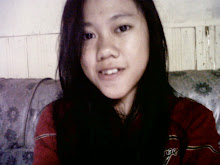Narrative text is someone tells to entertain,stimulate emotion or to teach.
The generic structures of narrative text are:
-Orientation : Introducing the characters of the story,the time and the place
The story happened(who/what,when and where)
-Complication : A series of events in which the main character attempt to solve
The problem.
-Resolution : The ending of the story containing the problem solution.
The function of narrative text are :
-To amuse or to entertain
-To deal with actual vicarious experience in different ways.
Kinds of narrative text are :
-Fable
-fairy tale
-Legend,etc
Language features of narrative text are :
-Focus on specific and individualized participants
-Use of material process(action verb)
-Use some of behaviourial and verbal processes
-Use of relational process and mental process
-Use past tense
-Use of temporal conjunction and temporal circumstances.
Example of narrative text
CINDERELLA
Cinderella is one of the most recognized stories around the world. The themes from the story appear in the folklore of many cultures. Sources disagree about how many versions of the tale exist, with numbers ranging from 340 to over 1,500 if all of the picture book and musical interpretations are included. The tale has its own Aarne Thompson classification which is 510A. The tale always centers around a kind, but persecuted heroine who suffers at the hands of her step-family after the death of her mother. Her father is either absent or neglectful, depending on the version. The heroine has a magical guardian who helps her triumph over her persecuters and receive her fondest wish by the end of the tale. The guardian is sometimes a representative of the heroine's dead mother. Most of the tales include an epiphany sparked by an article of clothing (usually a shoe) that causes the heroine to be recognized for her true worth.
The earliest recorded version of the tale comes from China. It was written down by Tuan Ch'eng-shih in the middle of the ninth century A.D. (850-60 Common Era). The tone of the story implies that its readers and listeners were already well-acquainted with the story by the time it was written down. The heroine of the Chinese tale is Yeh-shen. There is no fairy godmother in this earliest known version. A magical fish is Yeh-shen's helper instead. However, a golden shoe is used to identify Yeh-shen to the prince who wants to marry her.
Although a reference to the story exists in 16th century German literature, the next written version of the story comes from Charles Perrault in his Contes de ma Mere L'Oye in 1697. From this version, we received the fairy godmother, the pumpkin carriage, the animal servants, and the glass slippers. Perrault recorded the story that was told to him by storytellers while adding these touches for literary effect. Some scholars think Perrault confused "vair" (French for "ermine or fur") with "verre" (French for "glass") to account for Cinderella's admittedly uncomfortable footwear. This theory has been widely discredited now. Most scholars believe Perrault intended glass slippers as Cinderella's footwear. Perrault's version has a more humane ending than many versions of the tale with Cinderella finding husbands for her sisters. The sisters are left poor, blind, maimed, or even dead in many versions of the tale.
The Grimm Brothers' German version, known as Aschenputtel, or Ash Girl, does not have a fairy godmother. The heroine plants a tree on her mother's grave from which all of the magical help appears in the form of a white dove and gifts. At the end, the stepsisters' eyes are pecked by birds from the tree to punish them for their cruelty. Perrault's version is considerably more forgiving than this version.
In modern times, the tale of Cinderella has inspired countless picture books, musicals, novels, and dreams of little girls. I have included some of the versions on the Tales Similar to Cinderella Page. Versions of the tale have been collected and printed from Vietnam, Italy, Egypt, Australia, and the Algonquin Indians, to name a few. I also recommend these three external sites for additional information about the tale:
Langganan:
Posting Komentar (Atom)




Tidak ada komentar:
Posting Komentar